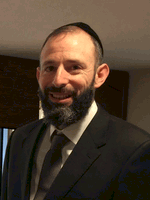Note: The following information is contained in the website http://www.circinfo.net/ , and it has been copied with permission. This is not an exact copy of all the information found on the website http://www.circinfo.net/ . For an exact text of the information contained in that site, please go onto the above mentioned site.
USA :
In the USA the rate of circumcision has always been high, although differs in different regions. The rates are recorded by the Centre for Disease Control's National Center for Health Statistics (NCHS) [240]. Since only those circumcisions recorded are included in the statistics, these are MINIMUM estimates, and are more useful for determining trends rather than absolute rates. The most recent rate given is 65.3%. For Whites there was no change (65.8 vs 65.5%). For Blacks it rose from 57.9% to 64.4%. The rates recorded in the north-east region were steady at 70%, while rates rose in the mid-west (80%) and South (70%). For the western region rates have been falling due to the influx of Hispanics (50% of all births, so diluting out the overall rate in California to 35%). Overall the statistics show an increase in circumcision rate for Non-Hispanic Whites. In the West individual hospital data show, moreover, the rate for Non-Hispanic Whites is in fact 75-80%. Interestingly, for the next generation of Hispanics, 29% of boys are circumcised ( San Francisco General Hospital data). Importantly, as noted, the actual rates are higher than indicated by this data. Since these data represent only the numbers reported, whereas not all are: under-reporting being more than 10% in one large study [125]. Even when they are supposed to be, they are often not listed on the medical record face sheet used in NCHS surveys, so that after the oversights were corrected in one study, infant circumcision rate increased from 75% to 89% [246]. The rates differ for different ethnic groups. Whites of Anglo-Celtic derivation have high rates, as do Blacks. In Hispanics the rate is quite low, circumcision not being a part of their culture. Thus high Hispanic populations will contribute to an overall lower rate for a particular region. In La Canada Hospital, Los Angeles , in which 71% of patients are upper-income whites, 83% of parents chose circumcision for their sons [3]. In comparison the Children's Hospital, LA, which serves primarily Hispanics, reported only 16% being circumcised [3]. The lower rates amongst non-Jewish European immigrants also contributes to a reduction in the overall rate for the entire USA . Interestingly, no difference has been found between families with and without private health insurance to cover the costs [280].
Between 1988 and 2000 the rate of circumcision of NEWBORNS BEFORE HOSPITAL DISCHARGE POST-BIRTH has increased 6.8% per year in the USA [242]. This analysis involved 4,657,402 male newborns in whom rate was seen to rise from 48.3% to 61.1%. The elevation was considered to be in response to the increased recognition of the medical benefits of circumcision [242]. Rate was greater for those privately insured, of a higher socio-economic status, in better health, and of Black race. Increases were, however, seen in every racial group, including Hispanics. The increase in Blacks made their rate catch-up to that in Whites. Rate was higher in the South, Northeast or Midwest location. (P < 0.0001 for all of these.) In the USA , most circumcisions are performed during the newborn hospitalization [401]. Of course circumcisions after discharge from hospital would increase the overall rate even more. This, together with inclusion of circumcisions not recorded by hospitals, would then account for the 80-90% rate in majority groups in the US population.
Canada :
The rate in Canada varies markedly between different regions. Even in the same province, Ontario , for example, the rate between different districts ranges from 2% to 70%, with a mean of around 50%. (Data from Ontario Ministry of Health and Statistics Canada , and Institute for Clinical Evaluative Sciences.)
Australia :
In Australia , a telephone survey in 2001-02 of 10,173 men aged 16-59 found 59% were circumcised, being 69% in those who were Australian born [291a]. The rate in those aged 16-20 years was, however, only 32%. Most had been circumcised in infancy. Previous data from over a decade ago found that in adult males in Sydney rate was 62% [92], and in Adelaide was 55% [150]. Medicare statistics [247], which relate only to rebate claims for circumcision, and are thus underestimates, show a rate for circumcision in recent years of 17% Australia-wide. The actual rate would therefore be somewhere between 17 and 32%. The Medicare data are nevertheless useful for monitoring trends. For boys aged less than 6 months Medicare data show a rise from 10.6% in 1994 to 12.7% in 2004 [247]. In the largest state, New South Wales , the rate rose from 11.3% to 16.3%. In the next biggest state, Queensland , it increased from 16.3% to a current steady rate of 19.5-20.8% over the past few years [247]. Again, to emphasize, the actual number circumcised is upwards of this lower limit. The data do not include circumcisions paid for privately or covered by Veterans insurance, nor do they cover circumcisions done by hospital doctors to public patients in public hospitals. In this regard, different states have different public hospital policies, it being apparently easier to get a public patient circumcised by a hospital doctor in a public hospital in Western Australia , for example. This could explain the lower reported Medicare rates in this state and others, such as Victoria , especially when one compares rates in the neighboring states of South Australia and New South Wales . The influence of ritual circumcisions in Jews would be small as the Australian Jewish community is less than 0.4% of the population. Another group in which the males are circumcised are the Muslims, but these make up only approx. 1% of Australians. In regards the current overall rate, it would seem that a new survey is needed to determine the proportion of the total male population that is circumcised to see if it is rising or falling from the level of approx. 50% seen in the surveys conducted in the early 1990s.








